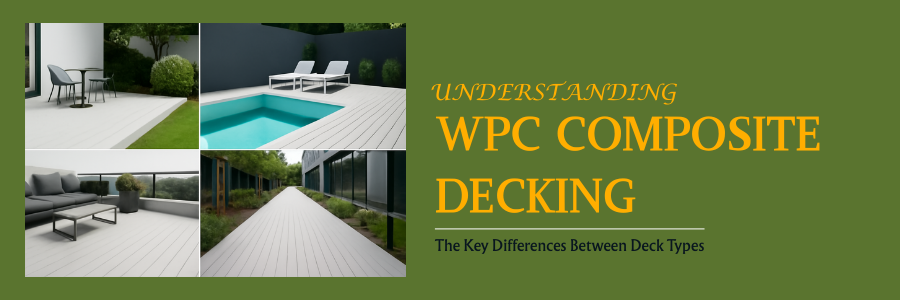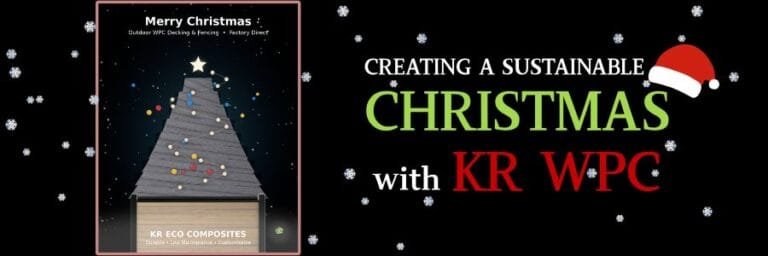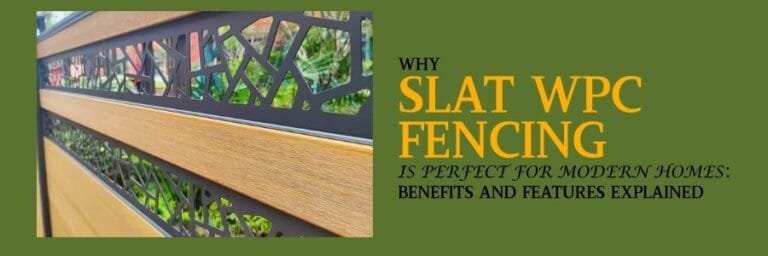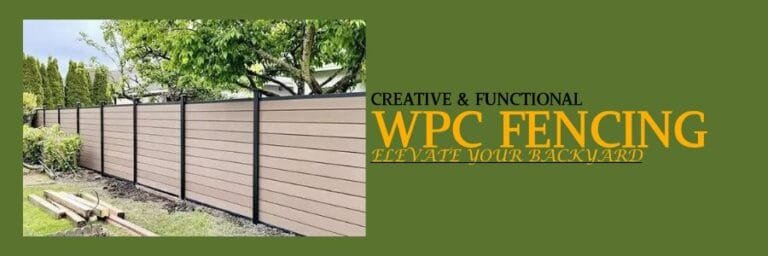Creating an outdoor space is a decision that you’ll love for years to come, and with the right decking choice, it’s like adding a cherry on top of the cake. When planning an outdoor space, look for something that catches the eye, looks stunning, and doesn’t turn into a weekend maintenance project. That is where WPC composite decking shines like a pro!
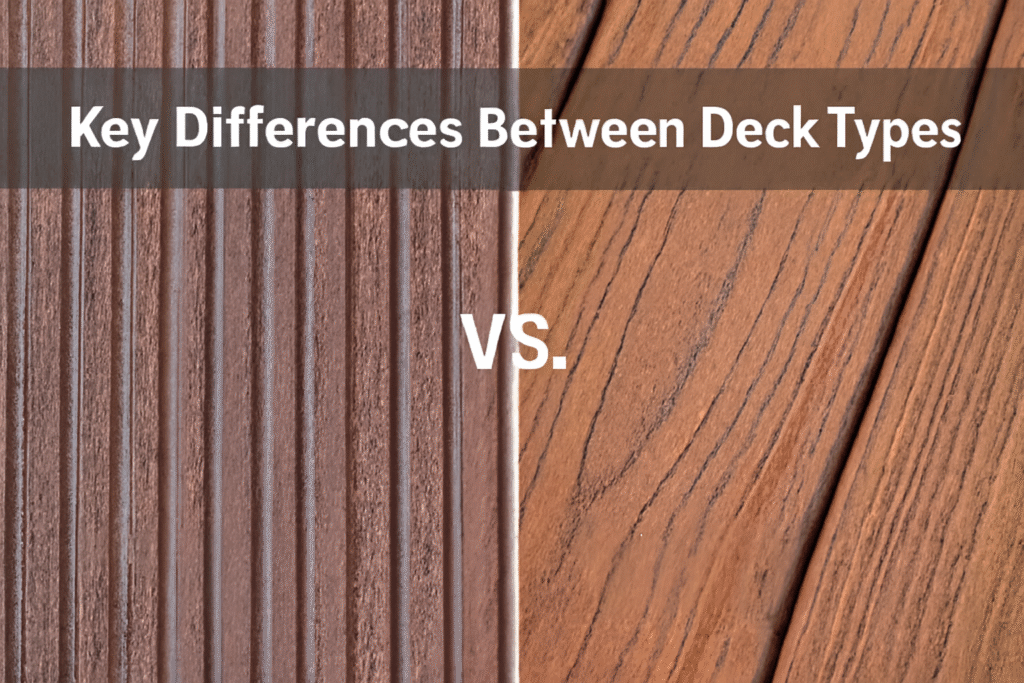
Choosing WPC decking without knowing the available options can ruin the experience and the money you’ve spent. This guide aims to help you understand the differences between first-generation and co-extruded boards, enabling you to make an informed decision. By the end of this article, you will be able to understand which option is best suited for you so you can turn your vision into reality.
Understanding WPC Decking Evolution
With time, everything evolves, and WPC is no exception. It all happened as a revolutionary alternative to natural wood, as it is famous for rotting, attracting insects, and splintering. WPC offers a superior alternative, being more durable and providing better resistance to insects, rot, and splintering compared to natural wood. When it first came out, the boards were of simple design but marked a significant step towards outdoor flooring. Over the years, people have invested more time and money in WPC decking, improving its durability, style, and aesthetic to make it more appealing to those seeking a superior outdoor floor option. This evolution transformed WPC from a single product into a range of multiple choices, each tailored to meet the specific needs and environments.
What Makes WPC Composite Decking Different
What makes WPC composite decking special is its unique composition, setting it apart from other alternatives. The composition of natural wood fibers gives it a warm, authentic appearance while recycled plastic polymers protect it from moisture, insects, and decay. This composition is a combination that offers WPC decking the beauty of wood, minus the maintenance. This is what makes it an ideal choice for outdoor environments where the performance is equally important as aesthetics.
Why Decking Technology Has Advanced Over Time
People do get fed up with the high maintenance of natural wood, so the push for better decking solutions became a necessity and a market demand. Commercial property owners, architects, and homeowners increasingly want materials for outdoor space that not only look good on the outside but perform like a pro, resisting weather damage, have water and UV protection, and be scratch resistant, making it last for years.
What This Guide Will Help You Decide
With the evolution of WPC decking from a simple WPC board to multiple options out there in the market, it’s easier to get confused about what options to choose from. This guide walks you through two major options: co-extruded WPC decking, featuring an advanced protective cap layer, and first-generation WPC decking, which offers reliable performance at a fraction of the cost. By the end of this article, you will have a clear vision of what choice to consider when it comes to choosing a WPC decking for outdoor flooring.
First-Generation WPC Decking: Core Traits and Use Cases
First-generation WPC decking is among the best budget-friendly options when it comes to upgrading your outdoor space. It marked the starting point for composite outdoor flooring, providing the look of wood without the constant upkeep. It offers a practical solution for homeowners looking for a dependable performance with an entry-level price.
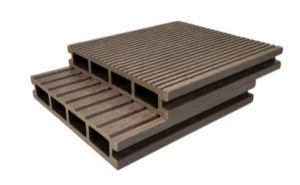
Material Structure and Manufacturing
First-generation WPC decking is crafted with a single-layer design made with a blend of wood fibers and plastic. This blend is evenly distributed from top to bottom, making the build simple, keeping the production simple and costs low, providing a simple yet dependable outdoor flooring solution.
Key Strengths
The significant advantage of first-generation WPC decking is its affordability. It provides you with a composite upgrade without the premium price tag. Its design is relatively simple with excellent durability for regular everyday outdoor usage that can handle foot traffic like a pro. The basic protection it provides against rot, insect damage, and UV exposure makes it one of the best alternatives for untreated wood, offering a practical step up for most residential areas.
Common Limitations
The first-generation WPC decking is known for its affordability, but it does come with some limitations. One of the significant trade-offs of single-layer design is that it is more vulnerable to fading when it’s exposed to sunlight for longer periods. Another problem is that it can stain easily, especially when stains remain untreated, which can cause permanent marks. Additionally, it absorbs more moisture, which may lead to swelling or mildew in consistently damp conditions. Considering the low price, you must also consider limitations when choosing outdoor flooring.
Co-Extrusion WPC Decking: Advanced Technology Explained
Think of first-generation WPC decking as the foundation, and Co-Extrusion WPC decking as an upgrade that takes composite decking to the next level. It is designed for homeowners and businesses seeking maximum durability and premium aesthetics, and co-extruded boards tend to fulfill that. This section will be a breakdown of how its dual-layer design works, the performance benefits it brings, and the types of projects where it truly shines.
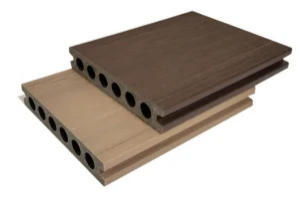
Dual-Layer Design
The dual-layer design of co-extrusion WPC decking is like having protective armor. The core is made up of sturdy wood fibers and plastic, but what sets it apart is the protective polymer cap that is engineered to be fused around the core during the process of manufacturing. This outer protective layer on co-extrusion WPC decking is what locks moisture out, shields against wear, and preserves the look of the board for years.
Enhanced Performance Features
The polymer cap isn’t just for making Co-extrusion WPC decking look good, but it is what protects the board from scratches, fading, stains, and water damage for years. Its ability to retain its rich color even in prolonged sunlight exposure, its resistance to stains and spills, and its durability in wet or coastal conditions, where other materials fail, make it a preferred choice over alternatives.
Ideal Applications
If you want a style that lasts, Co-extrusion WPC decking delivers. It is a top pick for luxury residents who wish to make no compromises on deck finishes, poolside areas where slip and water resistance are non-negotiable, and commercial spaces where foot traffic is a lot but can’t afford to look worn out.
How to Choose the Right Type of WPC Decking
With the two best options, co-extrusion WPC decking and first-generation WPC decking, choosing the right one for your outdoor flooring can be tricky. This section of the article will cover factors to consider when selecting WPC decking so you can make the right choice.
1. Budget vs. Longevity
If budget is your primary concern for WPC decking, you’ll likely find first-generation WPC most appealing initially. But when it comes to longevity, co-extrusion decking, with its protective cap, takes the win. Although it may cost more upfront, it can save money in the future by reducing the need for repairs, staining, and replacements. It is like paying more upfront for the peace of mind that comes with the years ahead.
2. Climate and Environmental Factors
Climate and environmental conditions are critical to consider when choosing WPC decking options, because these are the factors that can make or break your decking choice. In areas with constant moisture, prolonged UV exposure, or coastal regions, co-extrusion decking could be a perfect fit. Capped variants resist fading, swelling, and salt damage, making them a smart pick for homes near the sea or commercial spaces where there is high foot traffic.
3. Aesthetic Considerations
Aesthetics do matter when you are spending more. Co-extrusion decking is where you will get performance without any compromises on aesthetics. The manufacturing process allows deeper grain patterns and multi-toned colors for a rich, realistic wood look without the upkeep of real wood.
Real-Life Use Cases: Which WPC Decking Works Best Where
After understanding the features of the two types of decking, it’s essential to determine which WPC decking is best suited for a particular place and area. Below, we have highlighted some of the real-life use cases for the options to help you decide which option is best for your requirements.
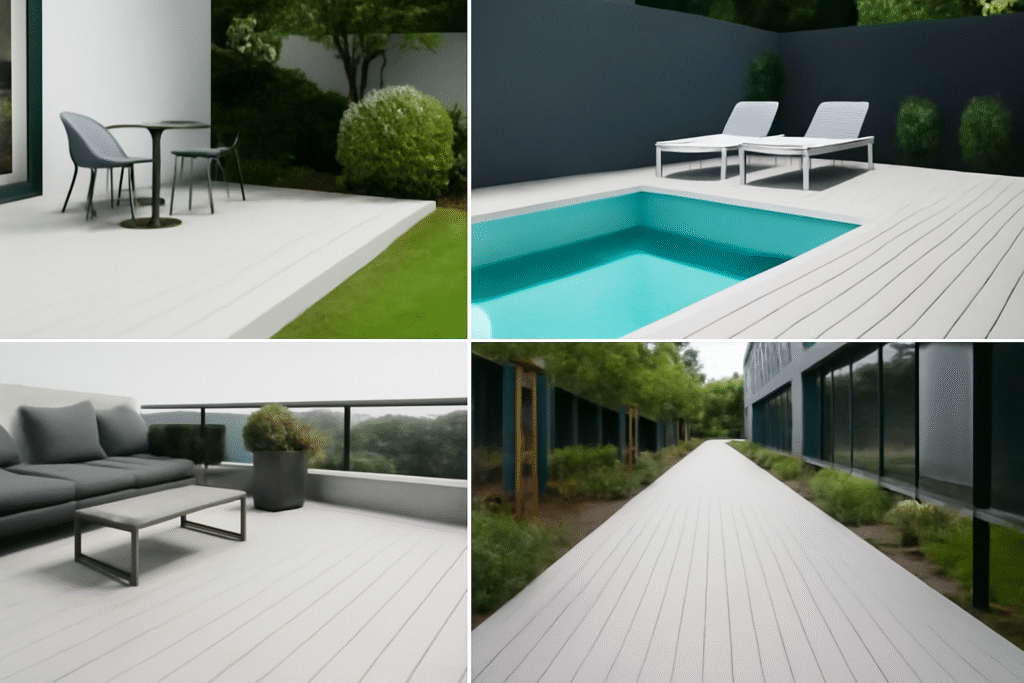
Garden and Backyard Patios – Go Simple and Cost-Effective
Recommended: 1st generation WPC decking
If you are looking for outdoor flooring options for small sitting areas, garden paths, or casual outdoor dining spots, 1st-generation decking options offer excellent value for the money. These are the areas where the use is moderate, and this decking option is strong enough and keeps your budget happy without sacrificing reliability.
Poolside and High-Moisture Areas – Prioritize Protection
Recommended: Co-Extrusion WPC decking
Areas that are close to coastal zones or poolside decking are where there should be no compromise to performance. For these high-moisture areas, Co-Extrusion WPC Decking could be a perfect option due to its outer cap that shields against water absorption, chlorine, and slippery buildup.
Rooftop Terraces and Balconies – Style + Performance Combo
Recommended: Co-Extrusion WPC decking
Rooftop terraces and balconies are the kind of outdoor space where the effects of weather are extreme. The constant exposure of decks to the sun’s UV rays, combined with sudden or intense rain, can cause significant damage. In such areas, Co-Extrusion WPC decking is a wise choice. It comes with premium aesthetics and a high-performance UV-resistant cap that keeps the colors strong, moisture protection prevents warping, and elevates the overall space without the worries of upkeep.
Commercial Spaces and Public Paths – Built for Traffic
Recommended: Co-Extrusion WPC decking
Commercial spaces and public paths are areas with high foot traffic. These are the space’s quality and aesthetics, both of which matter, and co-extrusion WPC decking options are known for having both qualities. From café patios to seaside boardwalks, capped WPC resists wear and dirt with low upkeep cost, making it look fresh for years.
DIY Home Projects and Rentals – Keep It Easy
Recommended: 1st generation WPC decking
DIY home projects and rentals are where you keep things simple and cheap. You don’t spend lavishly, but you look for simple to cut, drill, and install with standard tools. This first-generation WPC decking is perfect for fulfilling quick upgrades without being heavy on your wallet.
FAQ
- Is co-extruded decking worth the higher cost?
Co-extrusion decking does cost more, but its long-term performance, thanks to the outer cap that shields it from UV exposure, moisture, scratches, and dust, makes it last longer. It means minimal upkeep with long-term performance, making every penny worth spending on it.
- Which type of WPC deck is better for high-traffic areas?
For high-traffic areas, without a thought, co-extrusion WPC decking is the clear winner. Busy spaces like cafés, public walkways, or family decks need a capped surface that resists scuffs, stains, and heavy wear far better than first-generation boards.
- Will first-generation decking fade over time?
Yes, fading is natural, and people do experience comparatively more fading in first-generation decking boards. It does not happen immediately, but takes time. Although the color starts to get dull, the structural integrity stays strong.
- What maintenance does each type of decking require?
Although both types of decking are low maintenance when compared to wood. First-generation decking requires slightly more care, such as occasional sealing to stop slow fading, whereas co-extrusion needs regular care with soap and water to keep it looking fresh.
- What makes KR WPC decking stand out from other brands?
KR WPC with its advanced manufacturing and strict quality control, delivers boards that are stronger, more fade-resistant, and look a lot more realistic in texture than many of the competitors. Additionally, their range of colors and finishes makes it easy to match any design vision.

